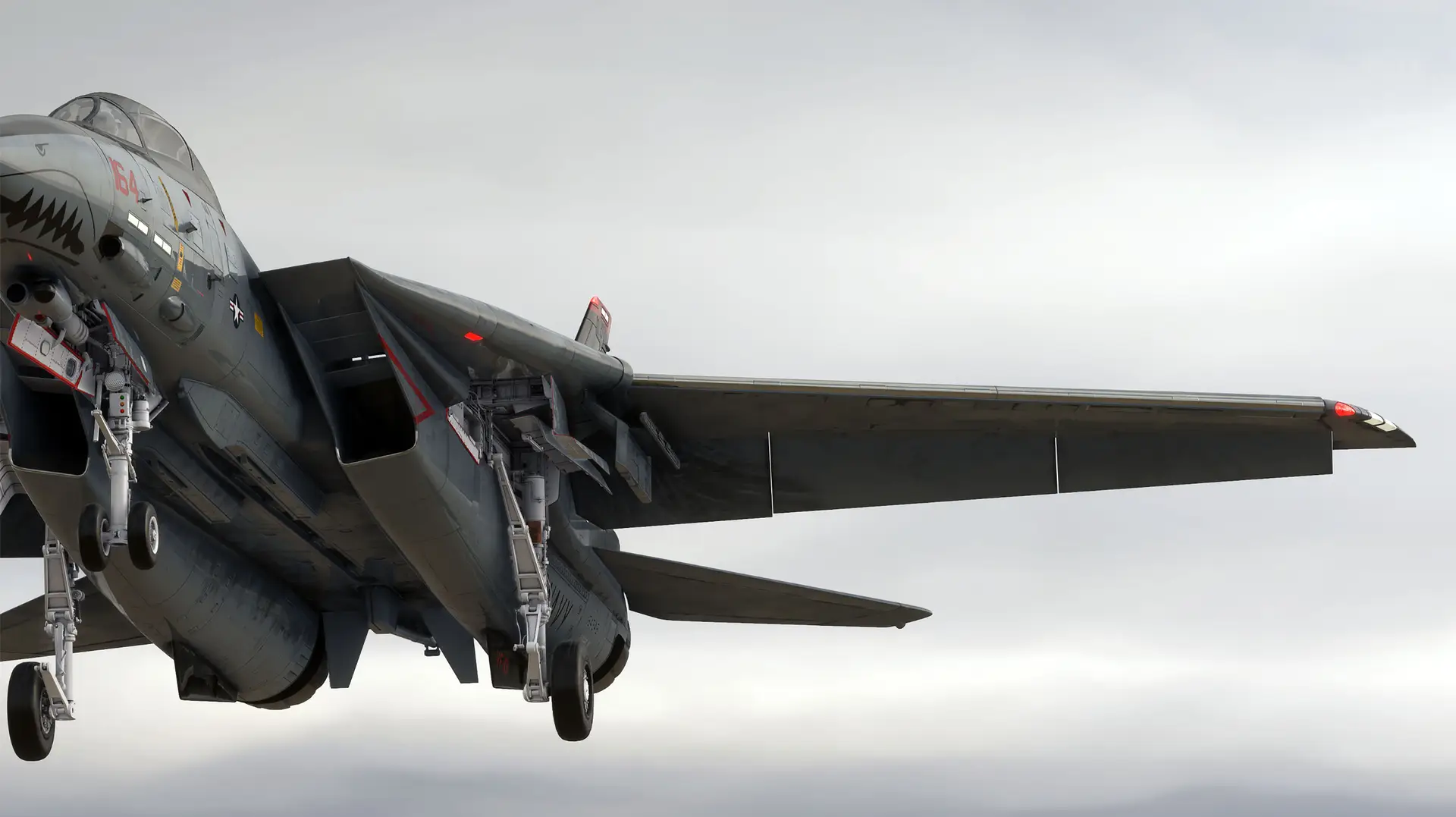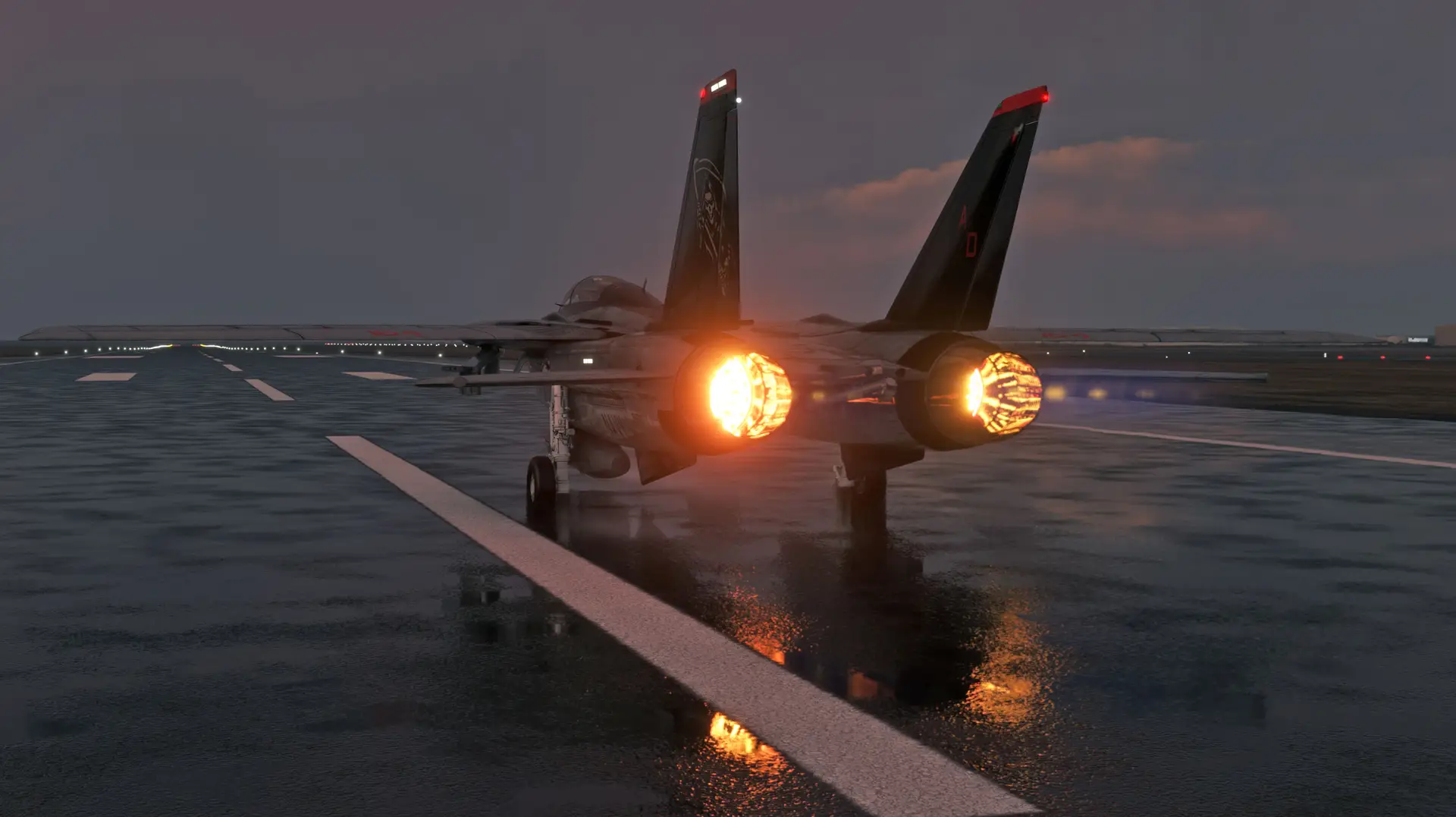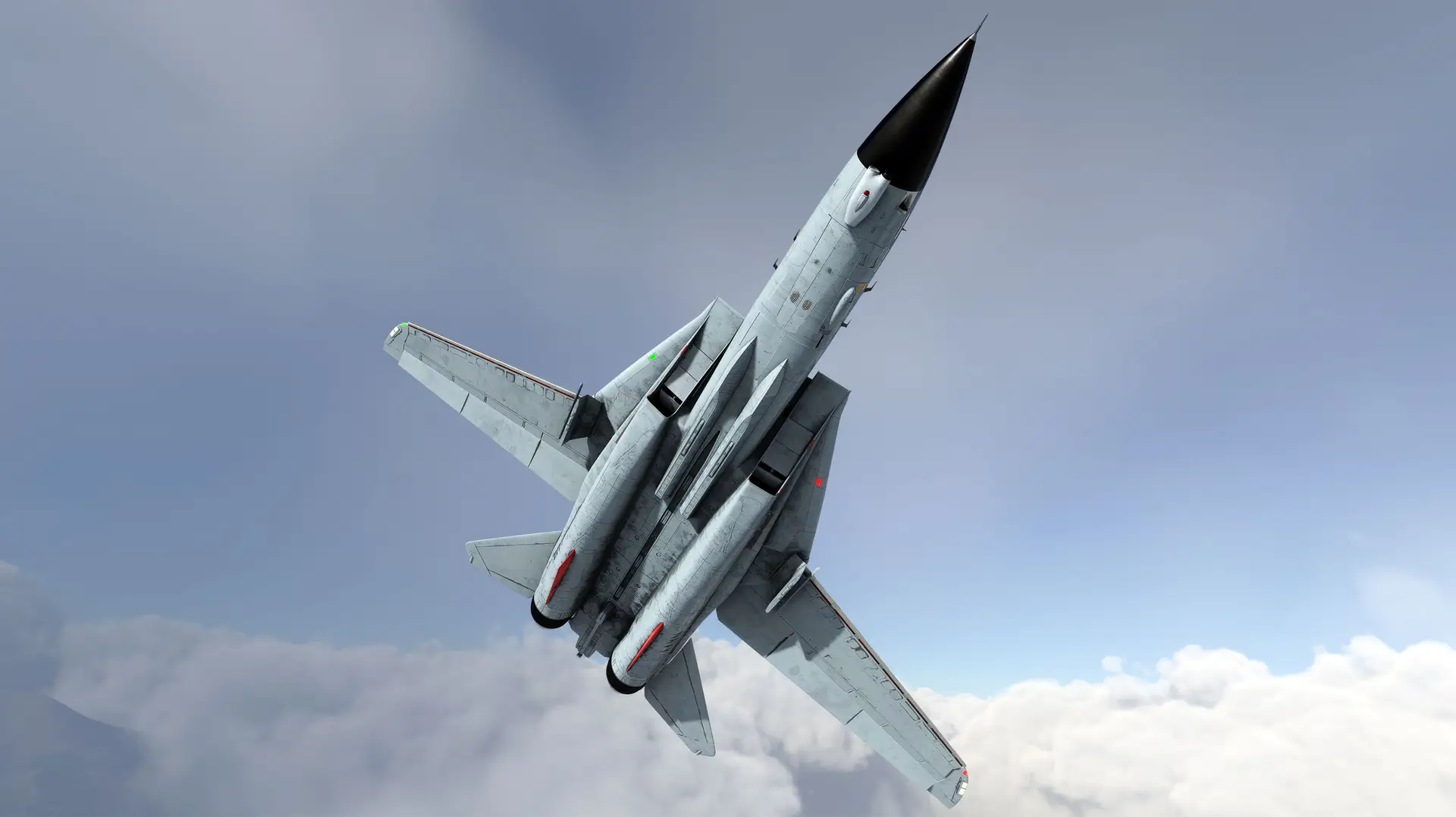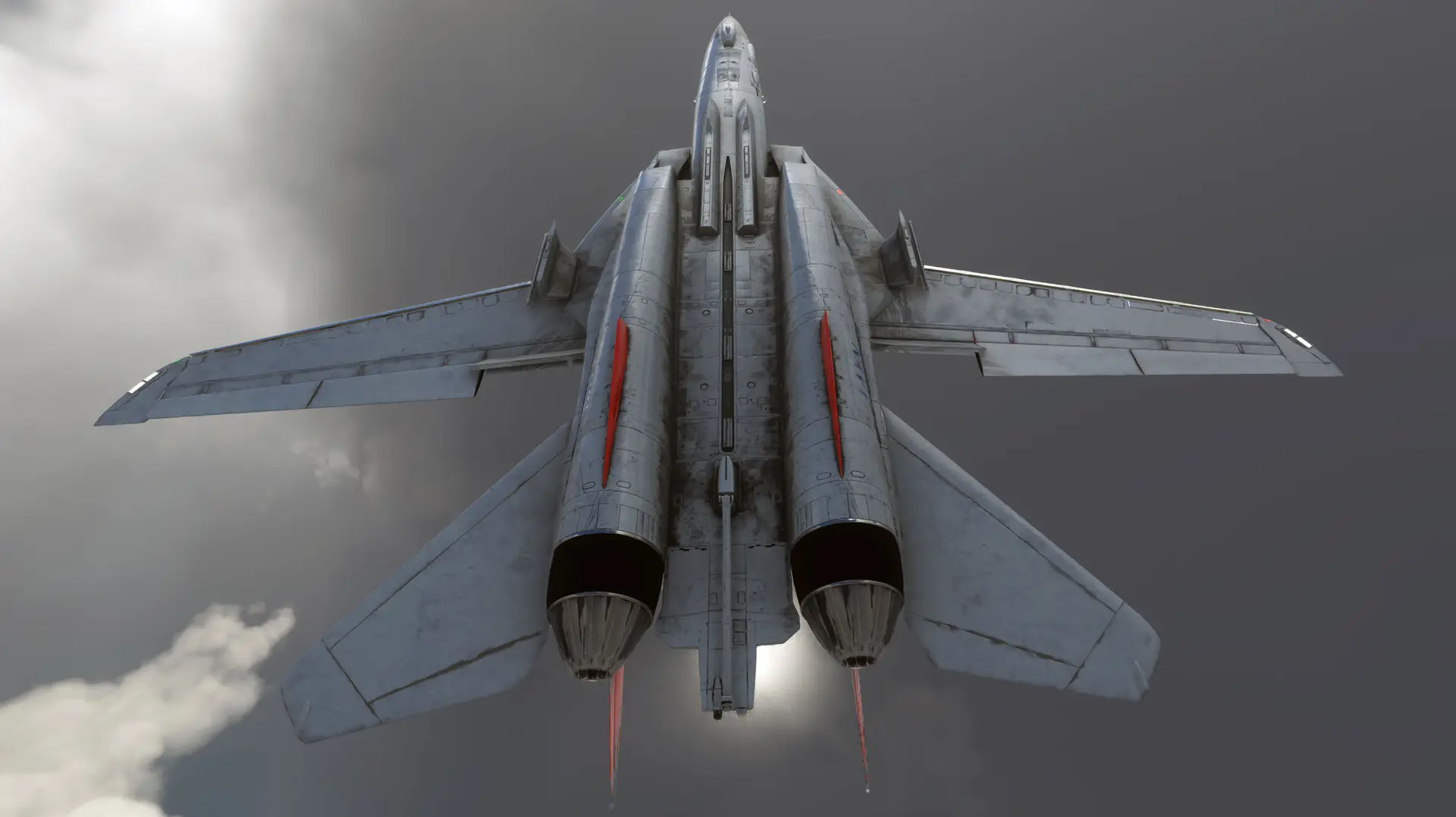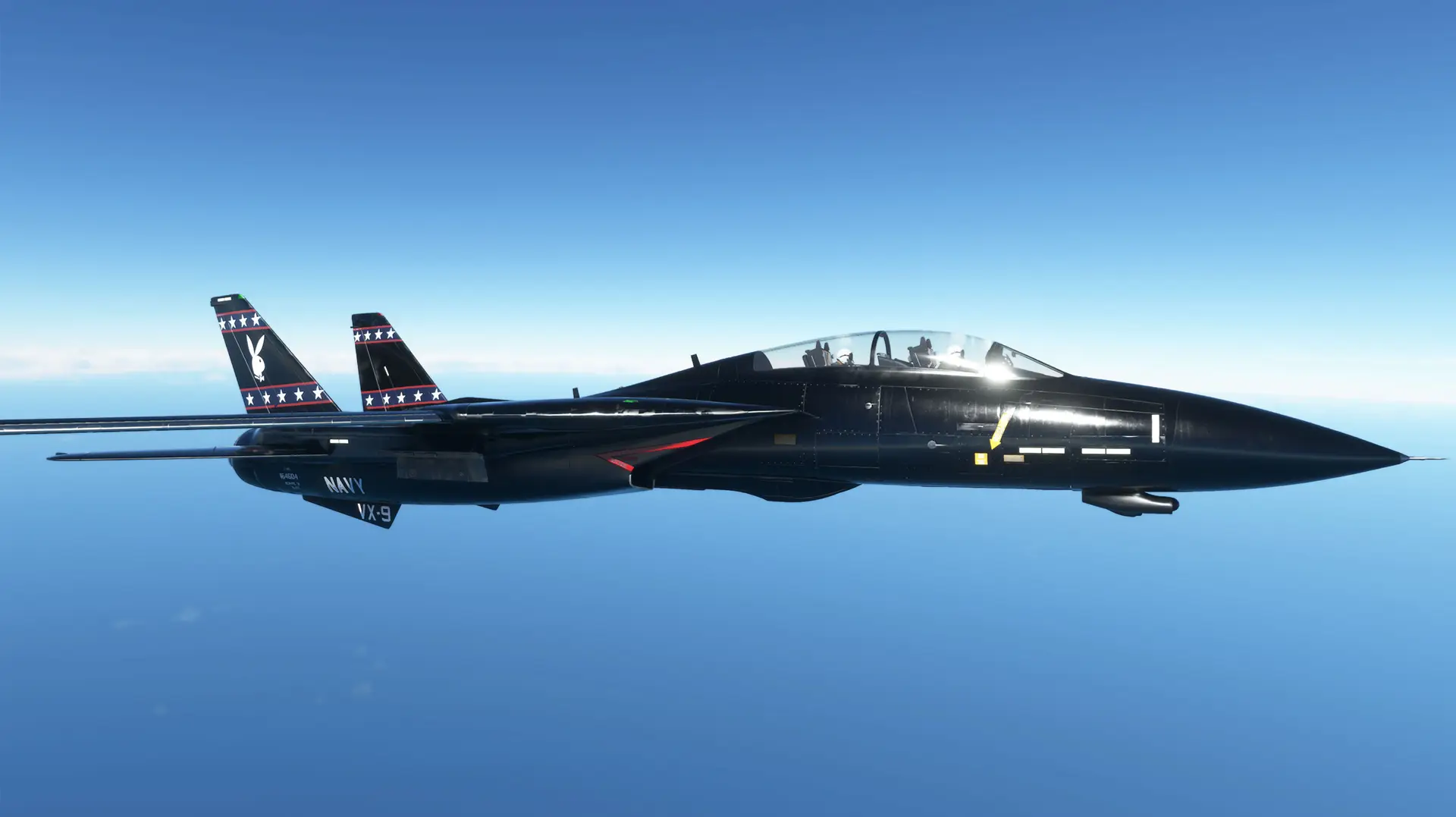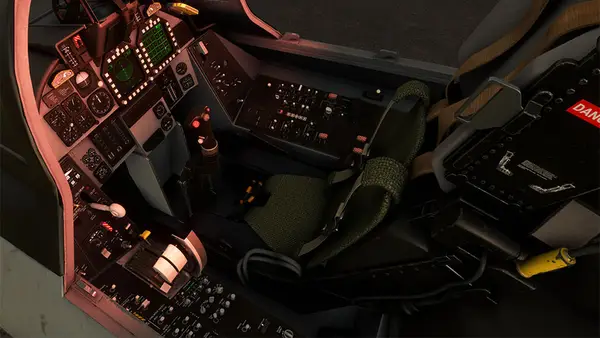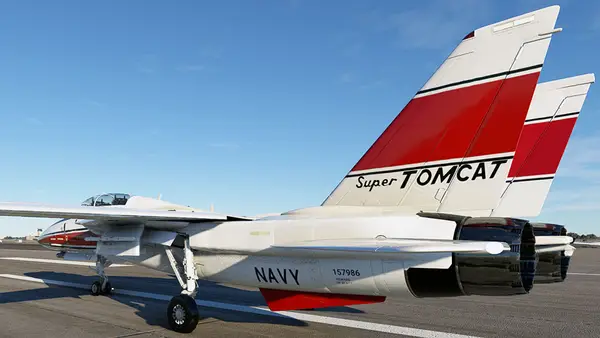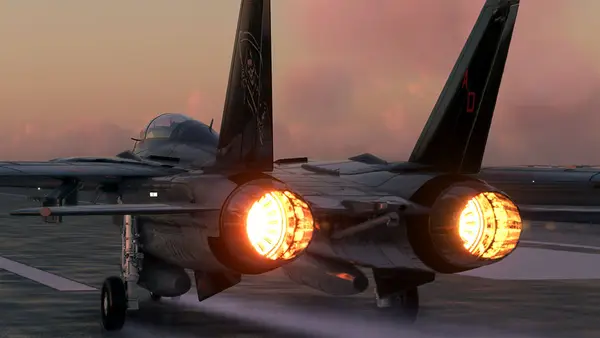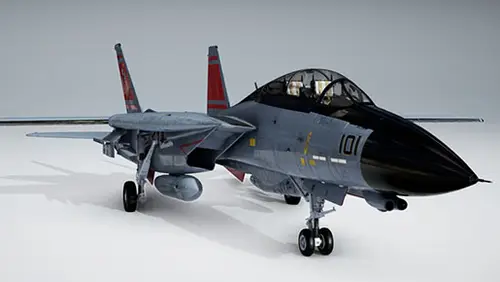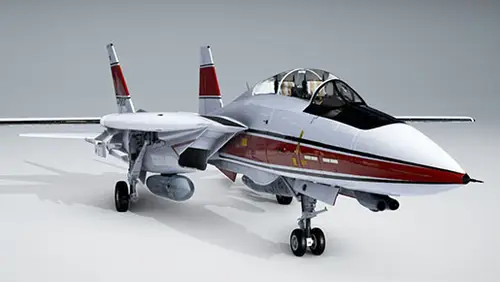- USD 14.99
- -53%
- USD 14.99
- USD 6.99
- Sale Ends: July 10 2025 5:00 PM +00:00
- View more offers at FS Addon Compare
- Added: January 26, 2023
- Updated: April 20, 2023
Our F-14D Super Tomcat's aerodynamic characteristic simulation is based on over 250 technical references and documents. The F-14 has unique characteristics, including a variable-sweep wing and effective wing loading giving extra lift generation from the fuselage. The variable-sweep wing is also related with aerodynamic characteristics and weight distribution and center of gravity changes. Many historical flight test reports and Grumman's research papers are well described F-14's unique aerodynamic features. To simulate these unique characteristics and provide best flight experience to the customer, we studied and analyzed over 250 technical references and documents, including above-mentioned reference documents (research papers, flight test reports, NATOPS flight manuals and performance charts). Based on this hard effort, our F-14D flight model also can simulate F-14's unique aerodynamic characteristics and center of gravity change characteristics.
We also designed completely new F110-GE-400 engine simulation model to simulate better thrust and fuel consumption simulation. Based on aerodynamic and engine simulation model, our F-14 flight model can simulate F-14's Mach 2 class supersonic flight characteristics with combat radius, ferry range and service ceiling characteristics. Furthermore, our flight model simulates thrust changes for variable flight condition like airspeed and air density and altitude.
The flight model of our F-14D is completed by Digital Flight Control System (DFCS) including attitude and trim assist system. In late 1990s to early 2000s, DFCS was integrated on F-14D Super Tomcat for better handling and flying qualities. Therefore, we integrated our fully customized DFCS features on our F-14D flight model for better flight characteristic simulation. Based on these efforts, our F-14D flight model can simulate High AOA maneuvering characteristics and instantaneous/sustained turn rate characteristics of F-14.
- High-fidelity aerodynamic simulation model
- High AOA maneuvering characteristics simulation
- Supersonic flight characteristics simulation
- Weight distribution and fuel weight simulation
- Center of Gravity characteristics simulation
- Fuel transfer simulation
- F110-GE-400 engine performance and fuel consumption simulation
- Digital Flight Control System simulation
- Fully customized DFCS logic model
- Fully customized Autopilot guidance/control logic model
